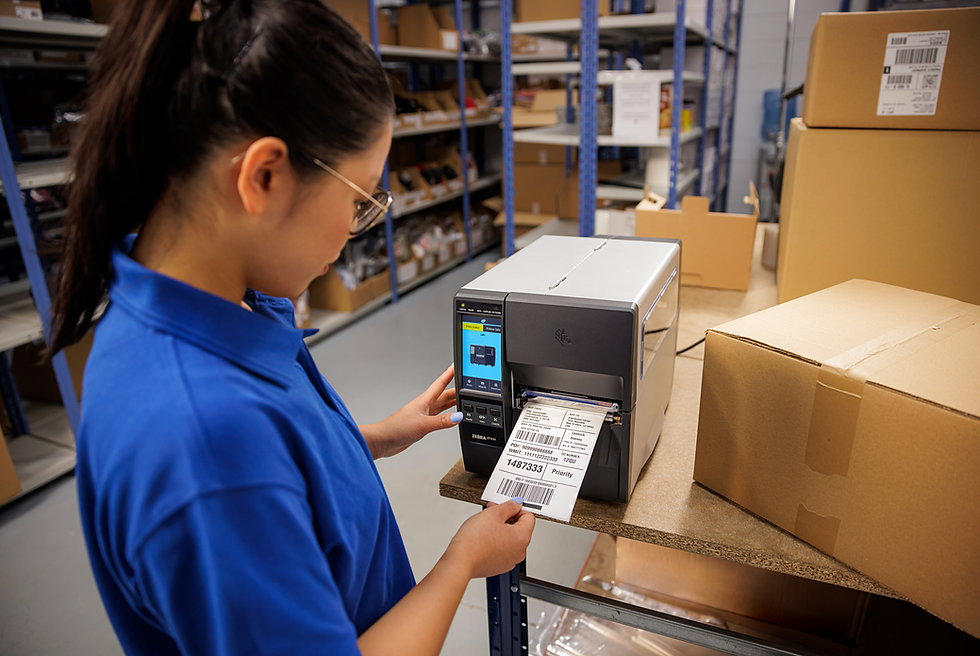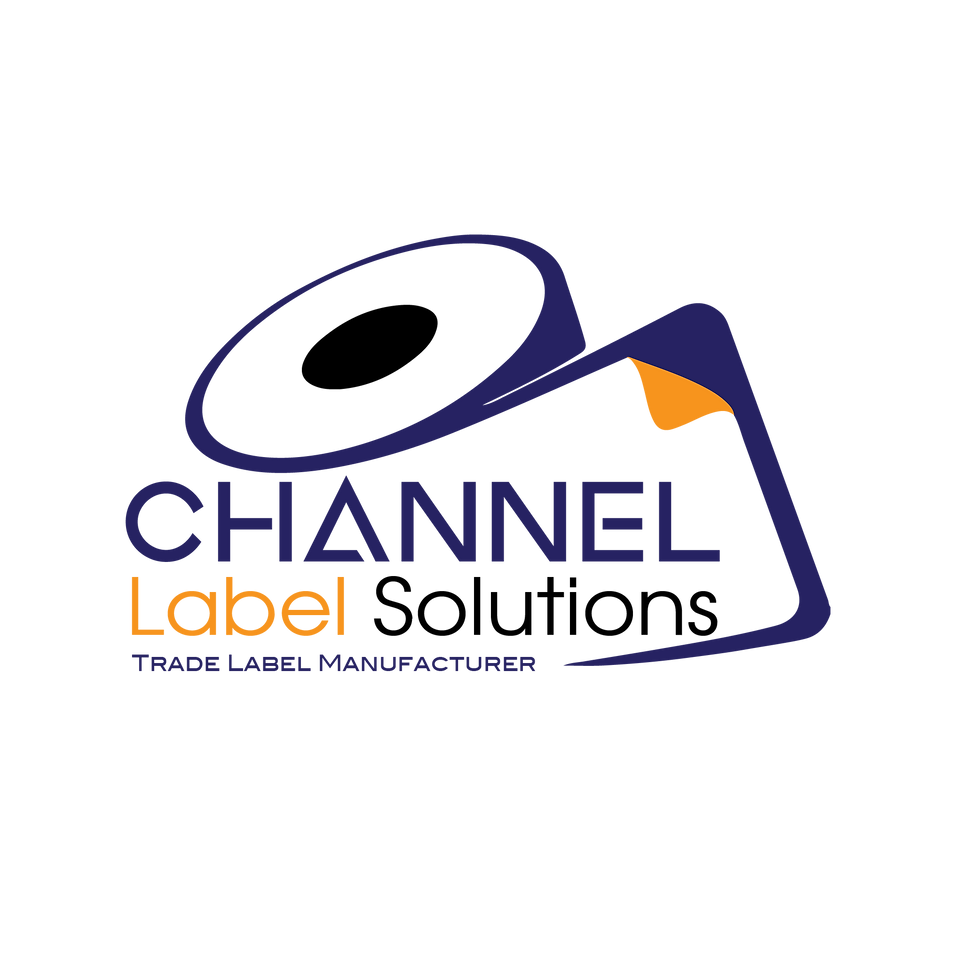













Uses of Barcode Labels
Barcodes offer a cost-effective solution for entities across virtually all sectors to monitor and collect details on products, assets, inventory, and even individuals. Various applications of barcode labels encompass:
Retail Pricing
Warehouse Organisation
Shipping and Recieving
Product Identification
Asset Management
Track & Trace Identification
Manufacturing Work in Progress
Laboratory
Static or Variable Printed Barcodes
Types of Barcode Labels
Classic barcode design featuring alternating black and white stripes, commonly found on items in supermarkets. However, contemporary barcode labels have evolved to embrace a diverse range of symbologies. Typically, barcode labels are categorised as either one-dimensional (1D) or two-dimensional (2D).

Are you in need of bulk identical barcode labels, or does each label require a unique code?
Bidvest Labels is equipped to supply both uniform and variably printed barcode labels.
Uniform, or static, barcode labels are identical in every print run. For instance, a customer might need thousands of the same UPC barcode labels for product uniformity.
Conversely, variable printing enables the production of unique labels for each print. This method can be used to distinguish specific items, categories, or batches, ensuring each is individually traceable. Variable data barcodes are invaluable for accurately identifying, tracking, and verifying items throughout the entire supply chain.
Such labels might feature sequential numbering or derive from a predetermined database of information. Beyond the barcode, variable printing offers the chance to incorporate unique information like text, batch numbers, expiration dates, and even specific design features.
By choosing Bidvest Labels as your partner for variable barcode labels, we commit to collaborating closely to guarantee the precise formatting of your variable data.


One-Demensional (1D) Barcode


1D barcodes are the most universally recognised form of barcodes. They are linear and encode data through the variation in widths and the spacing between parallel lines. While the data capacity of 1D barcodes is somewhat limited, they frequently link to an external database for additional details. Examples of 1D barcode types include:
-
Universal Product Codes (UPC)
-
EAN Codes
-
Code 39
-
Code 128
-
Interleaved 2 of 5 (ITF)
-
Code 93
-
Codabar
-
GS1 Databar
-
MSI Plessey
Two-Dimensional (2D) Barcode


2D barcodes are graphic symbols that encode information along both horizontal and vertical axes. Compared to 1D barcodes, 2D variants are more compact yet capable of holding significantly more data, eliminating the dependency on external databases. They also offer the benefit of rapid scanning capabilities, often at greater distances. Examples of 2D barcode types encompass:
-
QR Codes
-
Datamatrix Codes
-
PDF417
-
Aztec Codes
-
Maxicode

Facestocks

Gloss Paper Standard
Semi gloss is general labelling from food through to beverages. An over varnish is normally applied (gloss, matt or satin varnish). Paper is not water resistant → an over-laminate can be applied to protect material from moisture. Alternatively, opt for a polyprop label which is waterproof.

Gloss Paper Standard - High Gloss
High gloss (High Grade Semi Gloss) with a high gloss top sheet is high quality food and beverage labels. Also used for pharmaceutical labels. An over varnish is normally applied (gloss or matt varnish). Paper is not water resistant → an over-laminate can be applied to protect material from moisture. Alternatively, opt for a polyprop label which is waterproof.

Gloss Paper Wine - Cast Gloss
Has a top sheet of cast gloss (clay-coated) and is used predominantly on wine labels. Label will withstand ice bucket test and not disintegrate. The material is not waterproof.

Films - Clear - Gloss Clear Polypropylene
Used mainly for beverages → water proof and no label look.

Films - Clear - Clear Polyprop on Clear Backing
No look labels - clear top sheet and backing - used mainly in personal care and cosmetics. A much more expensive material
(top sheet+adhesive+backing)

Films - Clear - Gloss Clear Polyethylene
Used mainly for the personal care and pharmaceutical market.
Used on products which are squeezed as it is flexible and has properties which allow it to stretch It has. Waterpproof and no label look.

Films - White - Cavitated White Polypropylene
Waterproof label → used mainly in the FMCG and FOOD Markets. Be wary of selecting large machine-applicated labels as the material tends to be flimsy. A less expensive alternative to gloss white polyprop. It also has a slightly pearlised look.

Films - White - Gloss White Polypropylene
Personal Care, beverage, pharmaceutical and waterproof labels.

Films White - Gloss White Polyethylene
Used mainly for the personal care and pharmaceutical market. Used on products which are squeezed as it is flexible and has properties which allow it to stretch. Waterproof and no label look.

Films - Metallised - Gloss Metallised Polypropylene
Waterproof substrate. Used mainly on personal care products.

Thermal Top Paper - Premium
Top coated direct thermal with good short term resistance to oils, fat, alcohol etc. Used for thermal transfer printers - print transferred by heat. Mainly used for scale labels where variable information is require to be printed on each label. (Poultry, Butchery and Dairy Labels)

Thermal Economy
Thinner, less expensive alternative to thermal top. Only used for dry applications. Used for simple print (i.e not full colour).

Gloss Metallised Paper
Paper coated with metallised foil. Use for simulating foil or giving a metallic effect.

Metallised Paper - Matt Foil Paper
Water-resistant and good for high-quality prints with metallised inks. Vinyl coated with aluminium.

Other Paper Facestocks - Semi Gloss Board
Suitable where applications does not require adhesive labels.

Other Paper Facestocks - Semi Gloss Two Layer
Two layers of top sheet → we print on the top layer. Used for promotional labels (Disney & Readers Digest). Once the label is applied - you can peel off the top layer and apply that elsewhere. Available in semi gloss | thermal | film.
Adhesives

Removable
Removable adhesive is a general-purpose adhesive used on containers where customers want the label to be easily removable. It provides very good initial tack.
Minimum Application Temp: - 15 ˚C
Service Temperature: - 30 ˚C to 80 ˚C

Acrylic
Acrylic adhesive, while having a lower initial tack compared to Hotmelt, provides excellent adhesion after 24 hours. It is used for products that are hot-filled, such as soups, sauces, and marinades. The adhesive is clear and adheres well to PET and glass bottles but is not recommended for HDPE milk bottles due to the orange peel effect. Acrylic adhesive is also suitable for intricate die shapes and reverse printing.
Minimum Application Temp: + 5 ˚C
Service Temperature: - 20 ˚C to 80 ˚C

Deep Freeze
Deep Freeze adhesive is specifically formulated for application at very cold temperatures, such as commercial freezers, which typically reach much lower temperatures than household freezers. This adhesive is necessary when labels need to be applied to already frozen products and has a high initial tack.
Minimum Application Temp: - 20 ˚C
Service Temperature: - 50 ˚C to 70 ˚C

Hi Tack Hotmelt
Hi Tack Hotmelt adhesive is designed for rough surfaces and contains 25g of adhesive, offering extra adhesion compared to Standard Hotmelt. It is predominantly used on HDPE milk bottles but is significantly more expensive than Standard Hotmelt.
Minimum Application Temp: 0 ˚C
Service Temp: -40 ˚C to 70 ˚C

Standard Hotmelt
Standard Hotmelt adhesive has a high initial tack, making it suitable for difficult applications, including rough surfaces and edges of tubs or containers. It can be used on a variety of surfaces and performs better in slightly damp environments. However, it should not be used for products that are hot-filled, as the labels will fall off.
Application Temp: 0 ˚C to 50 ˚C
Service Temp: -20 ˚C to 70 ˚C






















